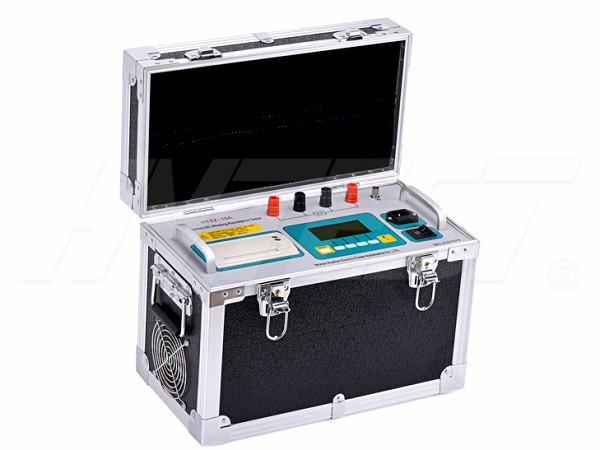Detection Technology
Field test method of DC resistance tester
Because the windings on the low-voltage side of the large transformer are connected in a "△" shape, the parallel windings have mutual inductance, the charging time is long, and the test data is unstable, which not only makes the test data lack credibility, but also increases the difficulty of judging the equipment condition.
There are many methods to test DC resistance on site, and the mainstream methods include the DC voltage drop method and the bridge method. The principle of the DC voltage drop method is to pass a DC current through the winding under test, and a voltage drop is generated on the resistance of the winding. The current through the winding and the voltage drop on the winding are measured. According to Ohm's law, the DC resistance of the winding can be calculated. . The bridge rule is to measure the DC resistance through the principle of bridge balance. There are two types of double-arm bridges and single-arm bridges. In addition, there are high-voltage charging low-voltage measurement method, magnetic flux pump method, second-order oscillation method, dynamic measurement method, short-circuit demagnetization method and constant current source.

There are various types of fast DC resistance testers produced by domestic manufacturers, each with its own advantages and disadvantages, and there have been some problems in use. In Guangdong, there have been many reasons for the unbalance of the low-voltage side DC resistance to exceed the specified range, so that the transformer has been unnecessarily checked under normal conditions.
In order to ensure the accuracy and reliability of the measurement data as much as possible, when measuring the DC resistance, if any unbalance is found, you can first remove the interference according to the following steps, so as to avoid unnecessary losses caused by misjudgment.
1) First check the test lead clip, the elasticity and the contact surface are good, the test lead is not broken, and the influence of the test lead and the test instrument is excluded.
2) Sufficient rest and discharge to exclude the influence of residual charge or induced potential.
3) Switch the tap changer several times, if the unbalance rate is not significantly reduced, and the unbalance rate of DC resistance of each gear is similar, the influence of poor contact of the tap changer can be basically excluded.
4) Perform temperature conversion for comparison with the previous test.
5) According to the data reported from the factory and handover, to determine whether the unbalance rate of DC resistance exceeds the standard due to the difference in lead resistance during manufacture.
After completing these steps, if the DC resistance still exceeds the standard, the transformer may have the following defects: ①The winding connection is not tight or the welding quality is poor; ②The internal fault of the tap changer; ③The winding or the lead wire is broken; short circuit.
Commonly used thermal relay function | 2022/1/30 | reading1302time Notes on Transformer Partial Discharge Test | 2022/1/29 | reading1066time return

